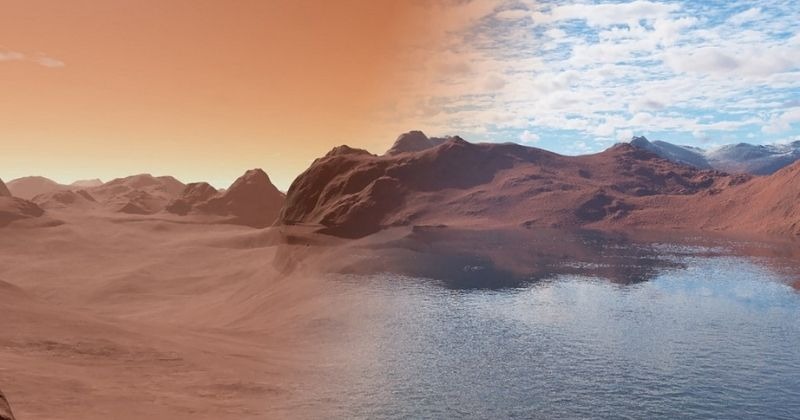
Billions of years ago, geological evidence suggests that the cold and dry Red Planet used to be much bluer. Enough water had accumulated in pools, lakes, and deep oceans to cover the entire planet in an ocean about 100 to 1,500 meters (330 to 4,920 feet) deep. That is roughly equivalent to half the Atlantic Ocean on Earth.
The question is: what exactly happened to all that water?
While some water can be found frozen in the polar ice caps of Mars, Scientists had previously suggested that the flowing water on Mars escaped into space due to the planet’s low gravityAnd although some water did indeed leave Mars this way, a new NASA-backed study claims that a large amount of its water is still on the planet, trapped in the crust
ALSO READ: NASA Successfully Lands Perseverance Rover & Ingenuity Helicopter on Mars
“Atmospheric escape does not fully explain the data we have on how much water once existed on Mars,” said Eva Scheller, lead author of the paper published in the journal Science.
How researchers estimate water Mars
Scheller and his colleagues used data from Mars’ rovers and orbiters and analyzed meteorites to study the amount of water the Red Planet had in the beginning and how much it lost over time.
One way to do that is to analyze the hydrogen levels in the planet’s atmosphere and rocks. Water consists of both hydrogen and oxygen, but not all hydrogen atoms are created equal. Most have only one proton in the nucleus, while the so-called “heavy” hydrogen has an extra neutron.

NASA / JPL
Ordinary hydrogen has little trouble escaping a planet’s gravity than heavier deuterium. The ratio of deuterium to hydrogen (D / H) in the planet’s atmosphere therefore reflects the loss of Mars water.
“Atmospheric escape clearly played a role in water loss, but findings from the last decade of Mars missions have indicated that there was a huge reservoir of ancient hydrated minerals whose formation over time certainly reduced the availability of water,” explains Bethany Ehlmann, professor. of planetary science and assistant director for the Keck Institute for Space Studies.
When water and rock come together, a process called chemical weathering can take place, forming clays and other water-bearing minerals that contain water as part of their mineral structure.
And while Mars has still trapped between 30 and 99 percent of its water in the crust, Scheller warns that it won’t be easy for future astronauts to easily extract water for their use.